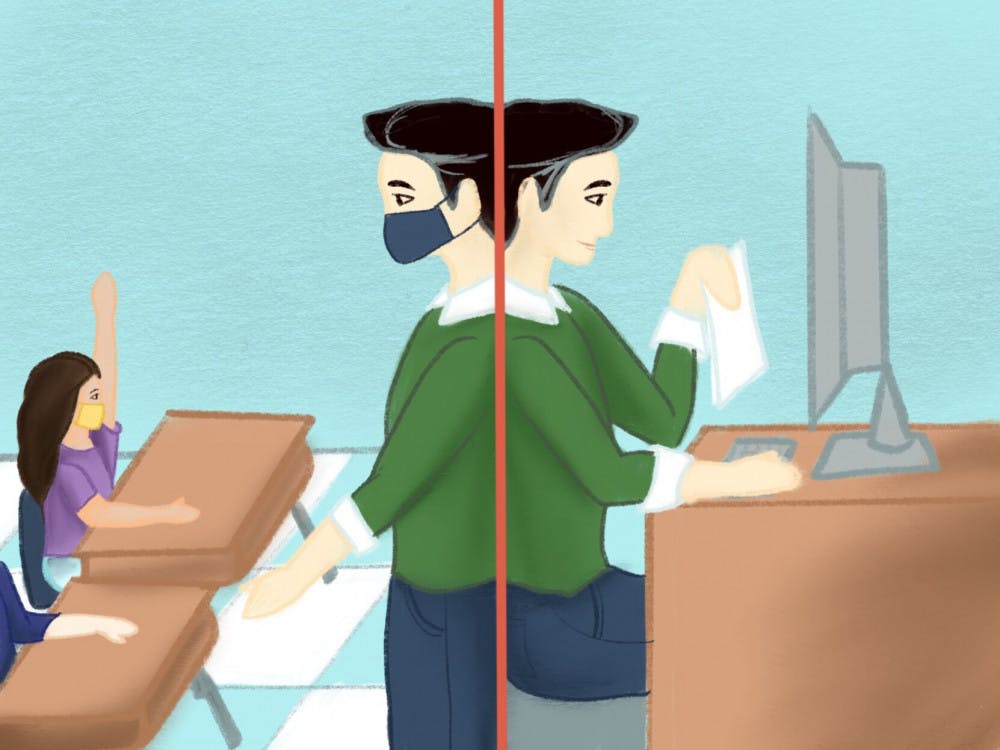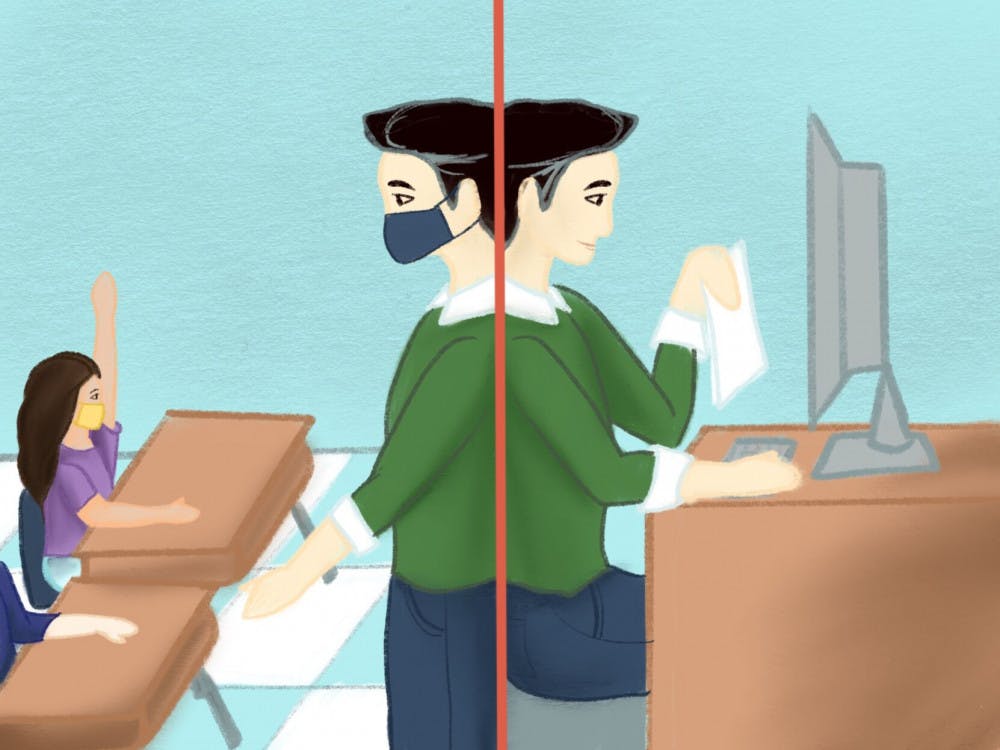
UF African American Studies professor Vincent Adejumo said he is like a Methodist preacher in his virtual classroom.
His animated storytelling coupled with dramatic pauses hasn’t faltered since switching his Intro to African American studies course online, and his attendance has even gone up.
“If you're a boring teacher then it's going to be boring,” Adejumo said.
COVID-19 has forced many professors to change their curriculum and create virtual scavenger hunts and camera-on policies to engage with students. While some professors have easily adjusted to the change, others miss the in-person interaction.
This fall, 4,202 courses were offered online, hybrid and in-person. The number of courses offered online cannot be determined because some professors decided to teach online after low-attendance or fears of catching COVID-19 from unmasked students, wrote UF data literacy professor Norman Lewis in an email.
Within the live lecture, Adejumo uses internet scavenger hunts, breakout room discussions and current events to keep his 60 students engaged online. He watches the shows his students watch like “Lovecraft Country,” a TV drama and horror series that takes place during the Jim Crow era. He also discusses police brutality and Black death within the news, he said.
“The passion just comes out when the literature lines up with the current events,” Adejumo said.
For more than seven years, Adejumo has taught online and hybrid courses. He has no problem teaching synchronous online lectures in the Spring, and he said he prefers it.
“There’s no point of resisting,” Adejumo said. “You just have to embrace it and get the proper training.”
The online classroom flexibility also benefits traveling student athletes, Adejumo said. It matters less that a student is styling their hair, making French toast or logging in from their phone for the lecture, he said. He just requires students to have their cameras on and participate in class lectures.
“We're all adults,” he said. “So, that's what they want to do, I'm not going to be such a stickler on it.”
Miklos Bona, a UF mathematics professor, said his class engagement has suffered. While class grades have remained the same, his jokes fall flat and most students don’t bother to turn their cameras on. He misses the tune of students shuffling into class, he said, and discussing word problems.
“That's always music to my ears when I walk into a regular classroom, and I hear right before class that the students are talking to each other about the material,” Bona said.
With muted microphones and blacked-out screens on Zoom, he can’t scan the room for confused faces or glance over the shoulder of students writing down the material like in a classroom, he said.
Bona often waits for a verbal yes before he moves on, but it is often the same students giving it, he said.
While he understands teaching from home is a safety precaution, he’s counting the days until he can return to the classroom safely and better service his students.
“I still prefer a traditional classroom,” Bona said. “The online experience is not all negative, but the negatives outnumber the positives.”
While UF French professor Rori Bloom has only 10 students in her French literature class, she still finds it hard to see them while she shares her screen. In addition, the informal interaction is lost in their wallet-sized Zoom frames.
“You don't see how they make each other laugh,” Bloom said. “Or that some of them are wearing uniforms because they've gotten off work.”
To break the ice, Bloom said she’ll ask about a poster or the pink wallpaper in their room to get students comfortable with speaking informally in French. She also creates one-on-one meetings during class time to make up for time usually spent during in-person office hours.
Despite the Zoom headaches and the virtual classroom frustration, Bloom said all of her students keep their cameras on and want to engage in discussion.
“It's going really well in terms of the level of maturity and engagement,” she said.
Michael Marsiske, a UF clinical and health psychology professor, wrote in an email that teaching online is among the least of his worries with COVID-19, climate change and political unrest within the nation.
“I consider the move to online platforms (Zoom, Canvas) the best thing that ever happened to my teaching,” Marsiske wrote.
By requiring his students to have their camera on, three-person breakout rooms and “Get to know you” meetings, he doesn’t feel a disconnect.
Students can hear his lecture clearly over Zoom compared to a fading voice within a 50-student lecture hall, he wrote, and students don’t have to squint to see the board.
“My personal experience is that Zoom has opened up a door to more fun, effective, engaging and interactive instruction – done with fewer sensory challenges – than the in-person classroom allows,” he wrote.






